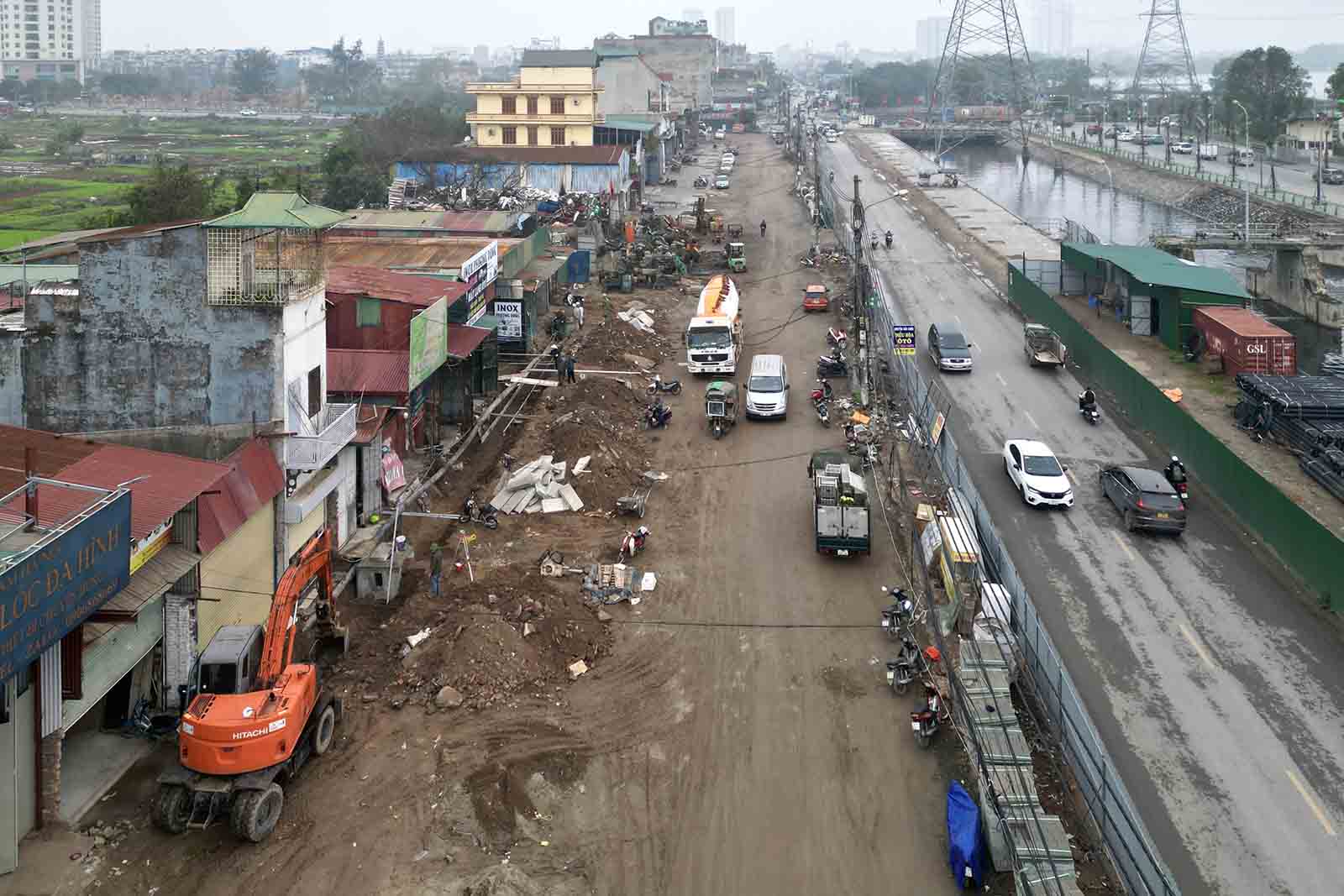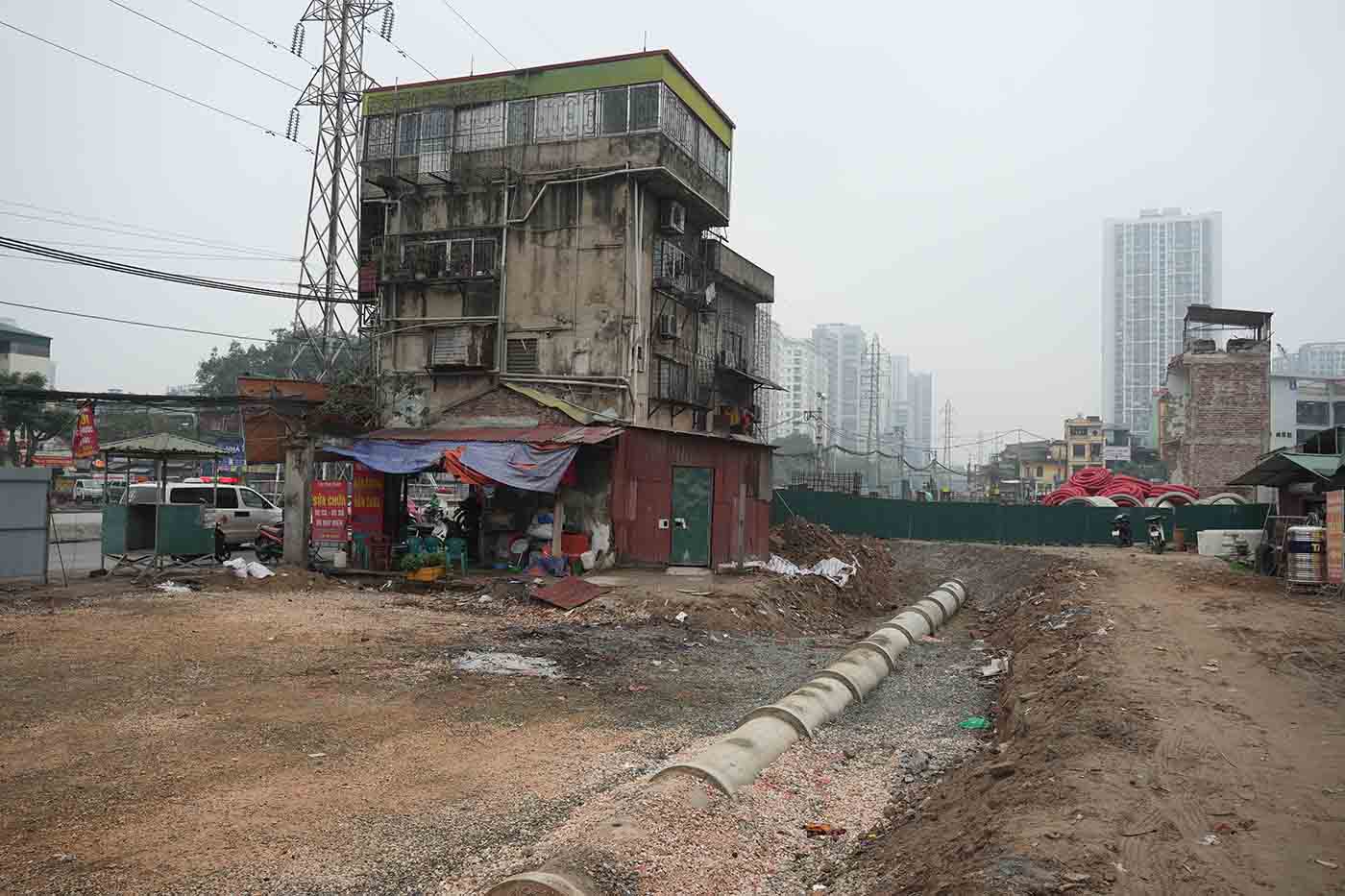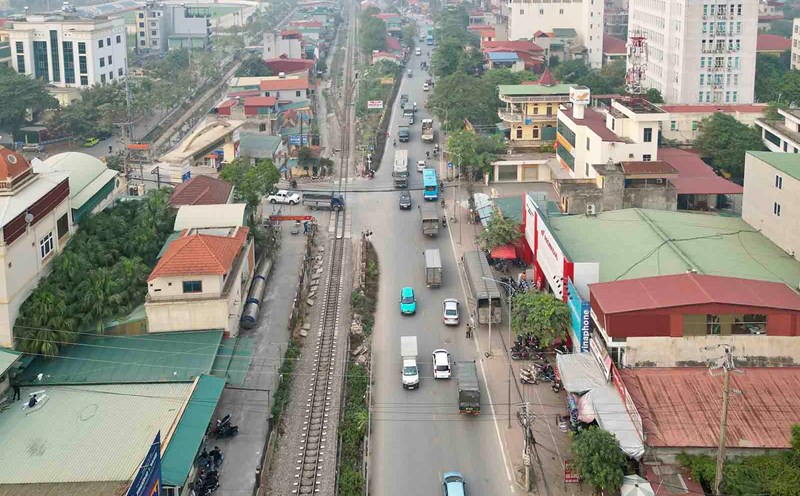The project to expand Tam Trinh Street (Hoang Mai District, Hanoi) with a length of 3.5km started in 2016, expected to be completed after 3 years. According to the plan, after being expanded, the road will have a cross-section of 40m, accommodating 6 lanes.
However, due to many difficulties in site clearance (GPMB), the project was stalled.
In July 2024, Hoang Mai district handed over about 800m of clean land to the contractor to implement the project.
However, according to Lao Dong, the site allocation was not seamless, causing many difficulties for the contractor during the project implementation.

According to the People's Committee of Hoang Mai District, the Tam Trinh road expansion project has a total area to be reclaimed of more than 54,000m2, involving about 1,590 households and 20 organizations.
The difficulty with site clearance is that the project's compensation policy on the entire route is not uniform, and prices and locations are different. Tam Trinh Street is one of the first projects in Hanoi to apply compensation and compensation policies for site clearance work under the 2024 Land Law, many issues do not have guidance documents.
For example, it is difficult to determine the origin of land that is agricultural land assigned by Thanh Mai Cooperative (Hoang Van Thu Ward) to households for service, households have converted to housing themselves. If agricultural land prices are applied, compensation is very low and households will not be able to buy resettlement houses. The 2024 Land Law does not regulate compensation for this type of land, so Hoang Mai District plans to apply commercial service land prices for unlicensed land.
However, according to regulations, specific commercial service land prices must be approved, that is, there must be a unit to appraise and investigate commercial service land types for transactions on the regional market, or compare commercial service land prices assigned by the state in the area.
However, the type of commercial service land for individual households is not currently traded or allocated, so the valuation unit cannot determine the price to issue a certificate, leading to no land price to approve the plan.
A representative of the People's Committee of Hoang Mai district said that up to now, Yen So ward is publicly listing 30 days with 64 households, of which 8 households have submitted applications to receive money that have submitted approval decisions (worth 70.2 billion VND) to receive money this week.
The remaining 52 households approved about 400 billion VND by the end of May. This new period publicly announced 48 cases, of which 15 resettlement households will conduct lottery this week.

In Mai Dong ward, there is a reclaimed area of about 20,000m2; 163 households and 12 organizations. For 12 organizations (about 4,729.40m2), the plan has been approved. 11/12 organizations have received money and handed over the site (3 organizations have not demolished).
For 163 households and individuals: The plan of 75 households has been approved, of which 50 households have received money (31 households have been demolished, 19 households have not been demolished); 25 households have not received money. The plan for 88 households has not been approved.
In Hoang Van Thu ward, the reclaimed area is about 27,500.000m2, including 206 households and 6 organizations. The investor has approved the plan of 6,353.8m2; 6 organizations have received money and handed over the site.
For 206 households and individuals: The plan for 29/206 households has been approved. The plan (14.231.2m2) for 177/206 households (112 households are approved by Thanh Mai Agricultural Cooperative) has not been approved. The People's Committee of the ward is organizing a confirmation of land origin according to the 2024 Land Law.
In fact, the site clearance work of this project has been changed 4 times: September 30, 2024; December 31, 2024; March 31, 2025 and most recently April 30, 2025. Without breakthrough solutions, it will be difficult for Hoang Mai district to complete this work by the last day of the district model (30.6).











